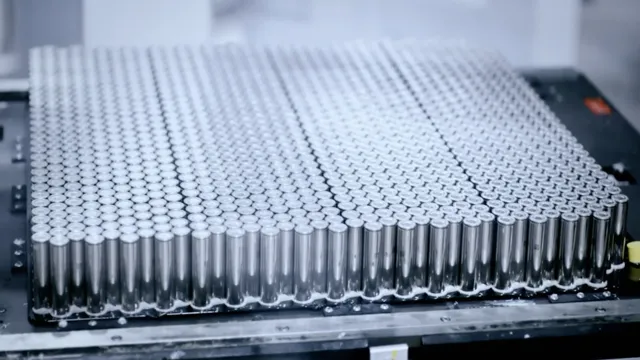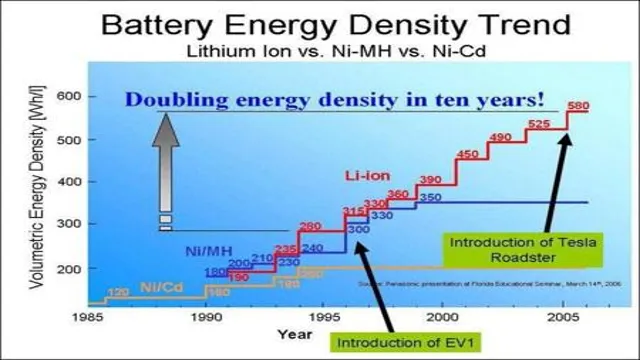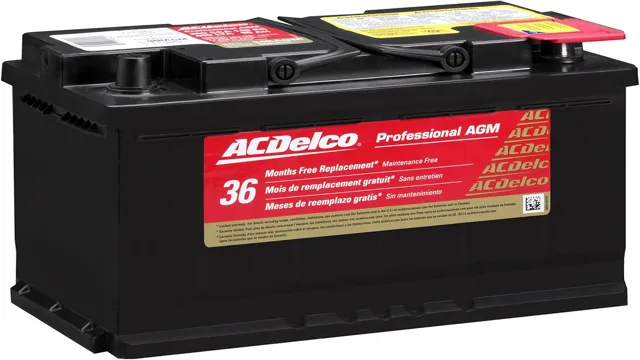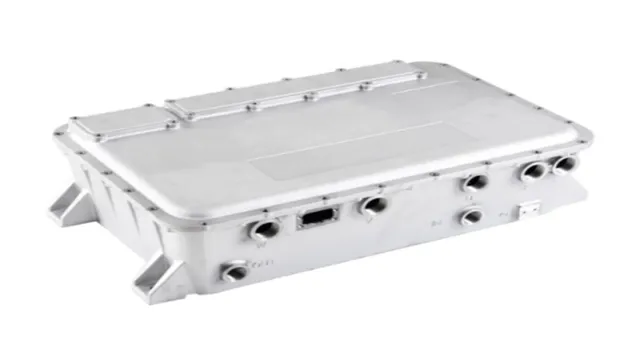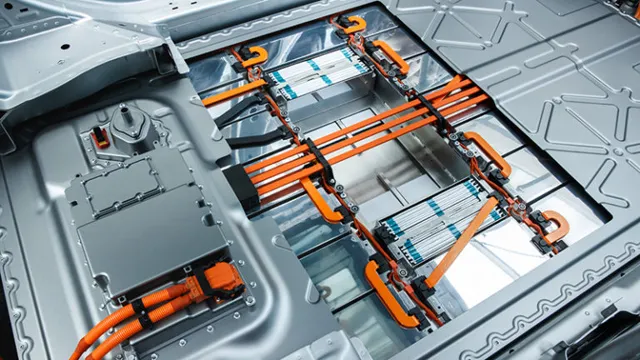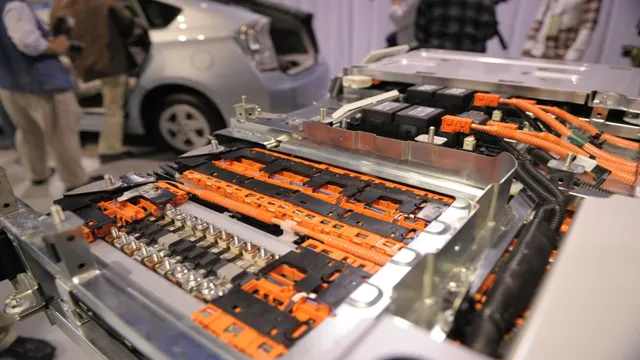Revolutionizing the Automotive Industry: Exploring the Wonders of Electric Car Battery Cell Connections
As we transition towards a greener automotive industry, it becomes increasingly important to maximize the efficiency of electric car batteries. One critical aspect of battery design is the connections between its cells. Efficient electric car battery cell connections are crucial for improving performance, reducing maintenance costs, and prolonging battery life.
Imagine a row of light bulbs on a string. If one lightbulb goes out, the rest of the string is affected, and the lights might flicker or turn off completely. Battery cells, like lightbulbs, work better when they are connected in a line.
A poor connection between cells can cause an entire battery to malfunction, reducing its capacity and lifespan. Battery manufacturers are working hard to create connection designs that improve the performance of electric car batteries. High-quality materials, such as nickel and copper, are often used to ensure optimal connectivity between cells.
Various welding techniques can be implemented as well, such as ultrasonic welding, laser welding, and resistance welding. The goal of efficient electric car battery cell connections is to minimize the amount of energy lost during the charging and discharging of the battery. By doing so, the battery can have a longer range, and drivers can enjoy longer trips on a single charge.
Plus, a battery with high-quality connections between cells has a lower risk of failure, reducing the likelihood of expensive maintenance costs. As the demand for environmentally-friendly transportation continues to grow, it is essential for battery manufacturers to focus on efficient electric car battery cell connections. By improving the design and materials used in connection technology, manufacturers can help drivers stay on the road longer, cut down on maintenance needs, and enjoy a greener future.
What are battery cell connections?
Electric car battery cell connection is a critical component of electric vehicle (EV) technology. It refers to the method of joining battery cells together to form a battery pack. There are two types of cell connections used in EV battery packs: parallel and series connections.
In a parallel connection, all the battery cells are connected positively to positively and negatively to negatively and, in effect, improve the overall capacity of the battery. On the other hand, in a series connection, the positive terminal of one cell is connected to the negative terminal of the next cell and so on, increasing the overall voltage of the pack. High-quality connections between battery cells are essential for ensuring effective communication within the battery pack, which is fundamental to the performance and safety of EVs.
Properly connecting battery cells allows them to work efficiently and deliver the necessary power to the EV’s electric motor. Ultimately, the cell connections are an integral part of a reliable and efficient EV battery system, which is a crucial aspect of ensuring the success of the electric vehicle industry.
Understanding the basics
Battery cell connections refer to the way individual cells, which are the basic energy storage units in batteries, are linked together to form a battery pack. Connecting these cells allows for the creation of a larger voltage and capacity, making the battery more useful for powering electronic devices or vehicles. The most common type of cell connection is the series connection, where each cell is connected positive to negative in a daisy chain fashion.
This adds up the voltage of each cell to create a higher total voltage for the pack. Another method is the parallel connection, where cells are connected positive to positive and negative to negative, to increase the capacity or energy storage of the battery. An understanding of cell connections is important for those looking to build or maintain battery packs, as incorrect connections can lead to diminished performance, damage, or even safety hazards.

Impacts of inefficient battery cell connections
Electric car battery cell connection is a vital component in ensuring efficient energy transfer in electric vehicles. Any inefficiencies in the battery cell connections can lead to significant impacts that affect the performance of the car. The most common effect is a reduction in the overall range of the vehicle, meaning that it will have to be charged more frequently.
Another impact of an inefficient connection is accelerated battery cell degradation, which can lead to reduced battery life and higher maintenance costs. Inefficient battery cell connections also generate heat, which can cause damage to other car components. Therefore, regular check-ups on the battery cell connections are essential to ensure the optimal performance and longevity of both the battery and the car.
Reduced range and lifespan
Battery cells are a crucial component in electric vehicles, and inefficient connections can significantly impact their performance. If the battery cells are not well connected, it can lead to a reduced range and shortened lifespan of the battery. Proper connections are essential to ensure that the battery cells can deliver their power efficiently.
In addition, poor connections can lead to higher resistance, which results in energy loss and reduced battery life. It can also cause uneven charging of the battery cells, leading to a weak battery. Therefore, it is critical to ensure that all the battery cell connections are correctly installed and maintained to prevent such issues.
Ultimately, efficient battery cell connections result in better performance and a more extended lifespan of the electric vehicle’s battery.
Safety hazards
When it comes to battery cell connections, efficiency is key. Inefficient connections can cause safety hazards that are detrimental to both people and the environment. If the connections are not tightly secured, it can lead to overheating and an increased risk of fire.
This is especially true if the battery is in a high-temperature environment or is being charged at a high rate. Additionally, inefficient connections can cause the battery to degrade quickly, leading to a reduced lifespan, which means more battery waste. Inefficient connections can also cause a loss of power, resulting in decreased performance, which is especially concerning in applications that require a steady and reliable power source.
In summary, ensuring efficient battery cell connections is crucial for safety and performance, and it can also help reduce waste and environmental impact.
Ways to ensure proper electric car battery cell connections
When it comes to electric cars, one of the most important components is the battery cell connections. Proper connections ensure that the battery performs at its fullest potential, providing the energy needed for the car to run. One way to ensure proper connections is by regularly inspecting the battery for any signs of wear and tear.
This may include loose or corroded connections, which can be fixed by cleaning or tightening them. Another way to maintain proper connections is by using high-quality equipment and materials during installation or repairs. This includes using appropriate tools and connectors that match the specifications of the battery.
Additionally, it is important to follow manufacturer guidelines and protocols to ensure efficient and safe connections. By paying attention to these details, electric car owners can enjoy reliable and long-lasting battery performance while reducing the need for costly repairs or replacements.
Regular inspections and maintenance
When it comes to maintaining an electric car, one of the most crucial aspects is to regularly inspect and maintain the battery cell connections. This is vital to ensure both the safety and longevity of the battery. One way to achieve this is to visually check the battery connections for any signs of corrosion or damage.
Additionally, it’s recommended to clean the battery terminals periodically with a mixture of water and baking soda to remove any buildup. Another tip is to ensure the battery connectors are tightened properly and securely fastened. This will prevent the risk of the battery terminals coming loose or potentially causing a short circuit.
By implementing these simple steps, you can ensure that your electric car battery is running at peak performance and avoid costly repairs in the future. Additionally, regular maintenance of your EV’s battery can provide you with peace of mind, knowing that you’re taking the necessary precautions to keep it functioning at its best.
Investing in high-quality battery cells
Investing in high-quality battery cells is crucial for maximizing the performance and longevity of electric cars. But even the best cells can fail if the connections aren’t properly maintained. One common issue is loose connections, which can lead to overheating and reduced power output.
To prevent this, it’s important to regularly check the connections between the cells and ensure they are tightened securely. Another issue is corrosion on the contacts, which can disrupt the flow of electricity. To prevent corrosion, use anti-corrosion grease and clean the contacts regularly.
By taking these preventative measures, electric car owners can ensure that their battery cells are properly connected and functioning at their best.
Advancements in electric car battery cell connections
Electric car battery cell connection advancements have significantly improved the efficiency and performance of electric vehicles. Traditionally, battery cells were connected in a series or parallel formation with metal tabs that created a contact point for electricity to flow between cells. However, this method was not very effective as it could create a high resistance between cells resulting in lower performance, and the tabs were prone to corrosion.
With advancements in technology, electric car batteries are now connected using flexible circuit boards or interconnecting wires. This method provides a more efficient and reliable connection, resulting in better performance and longer battery life. Additionally, these flexible connections allow for more design flexibility and easier assembly, resulting in cost savings.
Overall, these advancements in electric car battery cell connection technology play a significant role in the growth and popularity of electric vehicles.
New technologies to watch out for
As governments and industries continue to search for ways to reduce carbon emissions, advancements in electric car battery cell connections have been gaining attention. The traditional method of connecting battery cells involves welding, but this creates a risk of overheating and potentially damaging the battery. However, new technologies such as ultrasonic welding or laser bonding are being developed, which promise safer and more efficient connections between cells.
These methods involve using high-frequency vibrations or lasers to fuse the cells together, reducing the risk of overheating and allowing for faster production. This is a promising development for the electric car industry, as it could lead to more reliable and durable batteries, faster production times, and ultimately cheaper prices for consumers.
Conclusion: The importance of electric car battery cell connections
In the world of electric cars, the battery cell connection plays a crucial role in ensuring efficient energy transfer. It’s like the relay race of the car, where each cell passes on the baton to the next, except in this race, the stakes are higher, and there are no second chances. So, let’s give a round of applause to these tiny but mighty cell connections that power our eco-friendly rides, making them not just an innovative choice but a responsible one too!”
FAQs
What is an electric car battery cell connection?
An electric car battery cell connection is a link between individual battery cells in an electric vehicle’s battery pack that ensures the cells work together to power the vehicle.
What types of electric car battery cell connections are there?
There are two main types of electric car battery cell connections: wired and wireless. Wired connections involve physically connecting each individual cell with a wire, while wireless connections use electromagnetic fields to transfer energy between the cells.
Can battery cell connections affect an electric car’s performance?
Yes, battery cell connections can have a significant impact on an electric car’s performance. Poor connections can cause cells to work less efficiently, reducing the car’s range and overall performance.
How do electric car manufacturers ensure battery cell connections are properly maintained?
Electric car manufacturers use various techniques to ensure battery cell connections remain in good condition, such as regular maintenance checks and fault-detection systems that can identify and fix cell connection issues before they become a problem. Some manufacturers also use advanced algorithms to optimize cell connections and improve the car’s performance.
